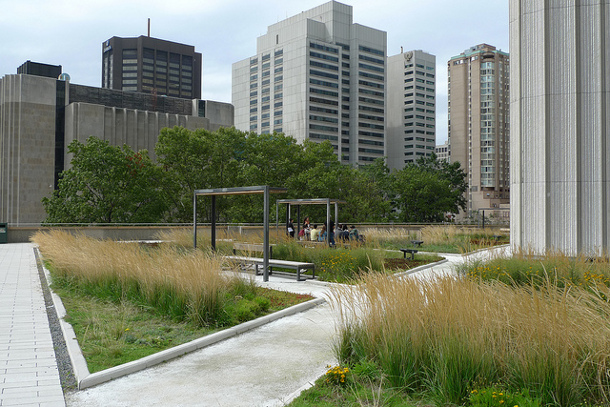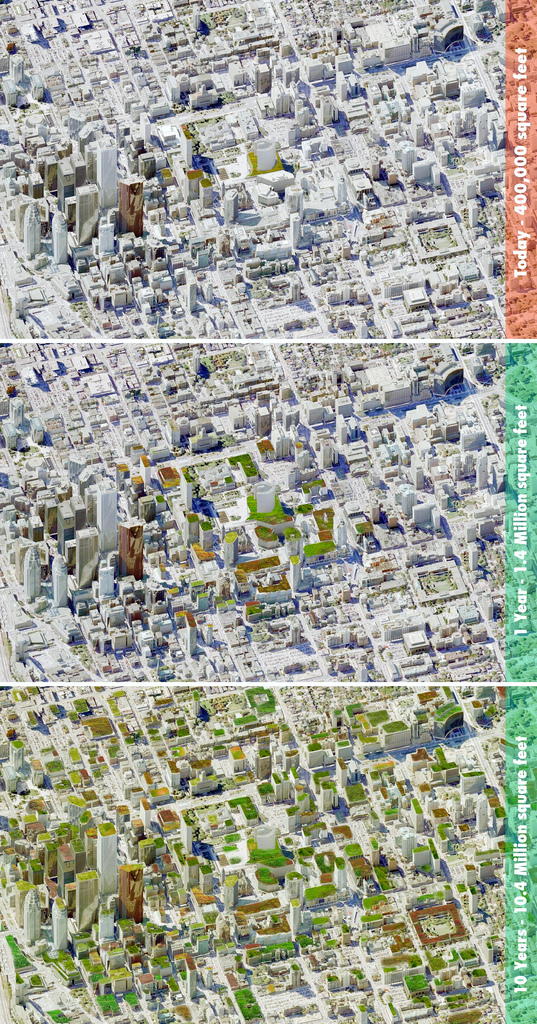Green Roofs Will Cover Toronto
Man, those Torontonians! They continue to impress us with their aggressive green infrastructure policies. Back in January of 2010, Toronto became the first North American city to make installing green roofs on new commercial, institutional, and multifamily residential developments compulsory – now that requirements will apply to industrial developments as well.
Like street trees, rain gardens, and other landscape features, green roofs are environmentally-friendly tools to help reduce urban heat island effect (thereby reducing energy demand), absorb significant amounts of stormwater on-site (avoiding sewer overload), and provide a pleasant habitat for local wildlife – as well as just adding a great deal of beauty to our urban spaces.
According to Toronto's standards, small residential and commercial buildings (less than six stories, I believe) are exempt. Beyond that, the larger the building, the larger the requisite green area. For the biggest structures, up to 60 percent of available roof space may require vegetation.
Industrial buildings have less strict requirements – only 10 percent of available roof space must be covered, unless, according to Kaid Benfield's article about it, "the building uses 'cool roofing materials' for 100 percent of available roof space and has stormwater retention measures sufficient to capture 50 percent of annual rainfall (or the first five mm from each rainfall) on site."
Buildings may request variances from Toronto's City Council to have a smaller green roof than is mandated, but but to do so will cost. The collected fees, which are adjusted by building size, are then invested in incentives for further green roof development
Last fall, Green Roofs for Healthy Cities announced that Toronto's green roof requirements had already yielded more than 1.2 million square feet (113,300 square meters) of planned new green spaces throughout the city. By their math, this will result in taking more than 435,000 cubic feet of stormwater offline and energy savings of over 1.5 million KWH each year.
Curious about what the wording for all of this looks like? Read Toronto's municipal bylaw that includes standards for when a green roof is required and find out what elements are required in the design.
Image of Toronto City Hall's green roof: Bricoleur Urbanism
Image of Toronto's green roofs over time: GreenRoofs.org


